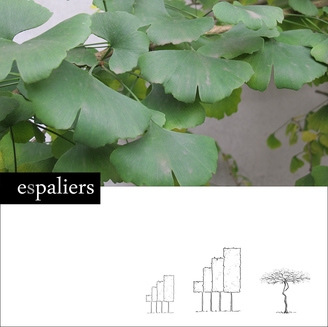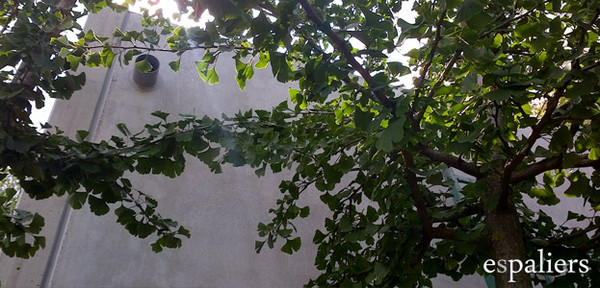
 Terug
TerugGinkgo biloba
The Ginkgo tree of life as a natural umbrella tree or an espalier.

The Ginkgo biloba as a privacy tree
The Japanese walnut offers a unique and subtle shielding. The green colour has something special. A closer look at the leaf reveals a distinct structure of intertwined needles and this refers to its genetic origin as a conifer. The Ginkgo is a conifer but behaves like a deciduous tree.
The autumn colour is a feast for the eyes and the leaves colour evenly with a minimum of colour nuance. It is best to leave the foliage untouched for a while, as it too is a delight to the eye.
Ginkgo is cultivated in several selections. Applying the right selection to the right place is our challenge. This tree is available in several trunk heights.
The Ginkgo biloba as roof tree
Ginkgo biloba or Japanese walnut is known for its special leaves. The roof ginkgo gives an atmospherically refined shade of filtered light. The foliage is completely organism-free. We grow these trees in various trunk heights and ages and for every budget. The oldest Ginkgo's that we have grown ourselves from young plant to parasol, have an age of 28 years.
Maintenance of the Ginkgo
The Japanese walnut is very low maintenance. The soft branches are not only easy to prune, but they also grow more slowly than the average parasol tree.
Special properties
Almost all parts of the Ginkgo are used for medical purposes. The Japanese nut tree has medicinal properties that are particularly useful for mental freshness. The Ginkgo has a spectacular autumn colour.
Alternative varieties:
Ginkgo biloba 'Pendula'
Ginkgo biloba 'Horizontalis
Ginkgo biloba 'Blagon
Ginkgo biloba 'Eifel
